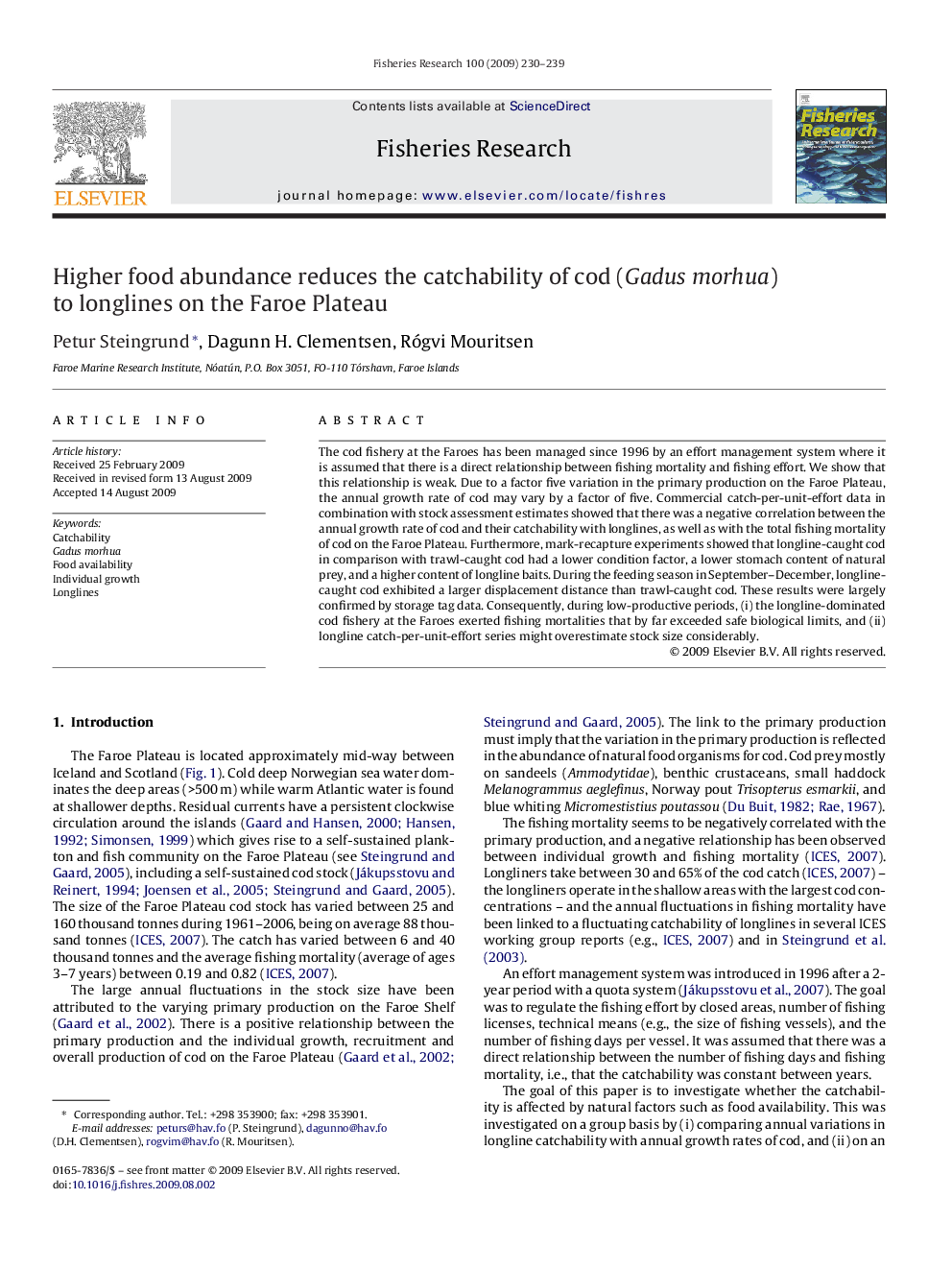| Article ID | Journal | Published Year | Pages | File Type |
|---|---|---|---|---|
| 4543810 | Fisheries Research | 2009 | 10 Pages |
The cod fishery at the Faroes has been managed since 1996 by an effort management system where it is assumed that there is a direct relationship between fishing mortality and fishing effort. We show that this relationship is weak. Due to a factor five variation in the primary production on the Faroe Plateau, the annual growth rate of cod may vary by a factor of five. Commercial catch-per-unit-effort data in combination with stock assessment estimates showed that there was a negative correlation between the annual growth rate of cod and their catchability with longlines, as well as with the total fishing mortality of cod on the Faroe Plateau. Furthermore, mark-recapture experiments showed that longline-caught cod in comparison with trawl-caught cod had a lower condition factor, a lower stomach content of natural prey, and a higher content of longline baits. During the feeding season in September–December, longline-caught cod exhibited a larger displacement distance than trawl-caught cod. These results were largely confirmed by storage tag data. Consequently, during low-productive periods, (i) the longline-dominated cod fishery at the Faroes exerted fishing mortalities that by far exceeded safe biological limits, and (ii) longline catch-per-unit-effort series might overestimate stock size considerably.
